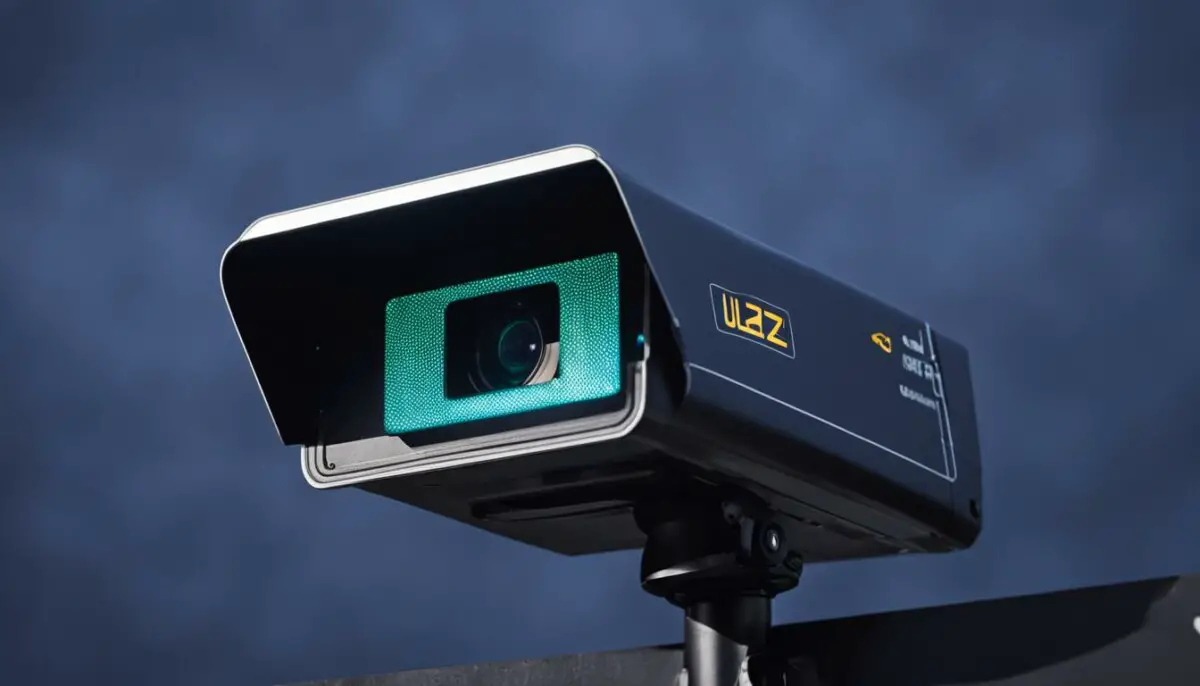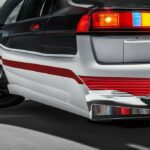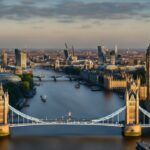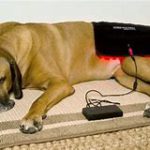Last Updated on 4 months by Francis
Since the introduction of the Ultra Low Emission Zone (ULEZ) in Central London in 2019, ULEZ cameras have become a familiar sight. However, many people wonder if these cameras use infrared technology to capture images. Let’s dive into this question and find out the truth.
Contents
Key Takeaways:
- ULEZ cameras are not infrared cameras and do not capture images in the dark or detect heat signatures.
- The primary purpose of ULEZ cameras is to monitor and enforce low emission requirements.
- These cameras use Automatic Number Plate Recognition (ANPR) technology to identify non-compliant vehicles.
- ULEZ cameras are part of a broader effort to reduce air pollution and promote low emission vehicles.
- The expansion of ULEZ regulations and the use of ANPR cameras have raised concerns about privacy and legality.
How ULEZ Cameras Work
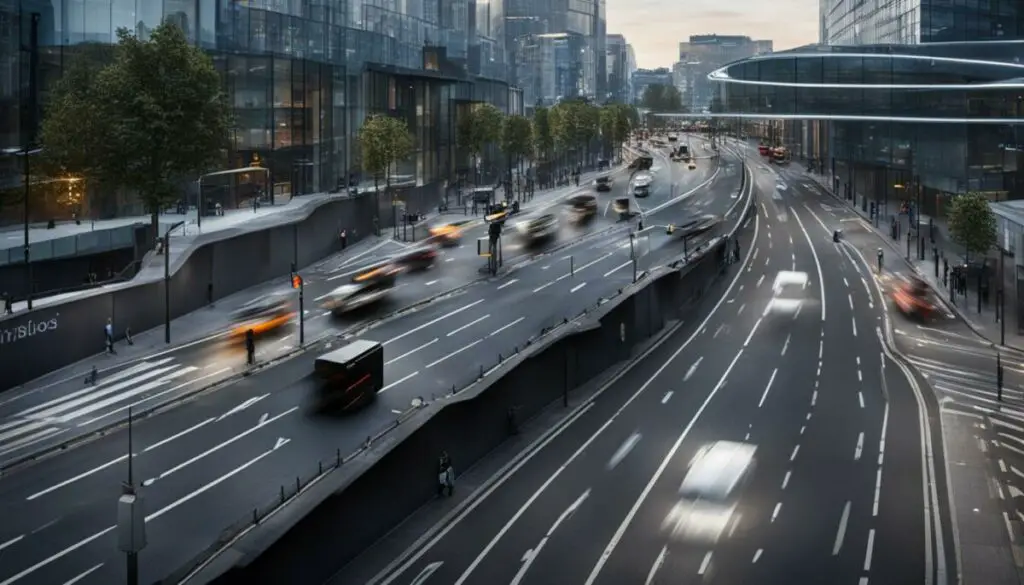
The ULEZ camera system plays a vital role in monitoring and enforcing low emission requirements within the Ultra Low Emission Zone in London. Made up of approximately 1,400 ANPR (Automatic Number Plate Recognition) cameras, specifically Siemens “Sicore II” cameras, this comprehensive system ensures efficient monitoring of traffic flow and emission compliance.
These advanced ULEZ traffic cameras are strategically positioned to cover multiple lanes, providing comprehensive coverage and high accuracy. Operating at an impressive rate of 40 frames per second, these cameras capture the registration numbers of passing vehicles.
The recorded vehicle data is then cross-referenced with various vehicle attributes, including type, year of manufacture, date of registration, and emissions data. This thorough analysis helps determine the compliance status of each vehicle with respect to ULEZ requirements.
One of the key components of the ULEZ camera system is the VRM (Vehicle Registration Mark) checker. This tool utilizes data from reputable sources such as the DVLA (Driver and Vehicle Licensing Agency) and VCA (Vehicle Certification Agency) to accurately assess the compliance status of each vehicle.
The comprehensive nature of the ULEZ camera system, along with its integration with the VRM checker, ensures the effective enforcement of ULEZ regulations and promotes the use of low emission vehicles.
| ULEZ Camera System | Features |
|---|---|
| Number of Cameras | Approximately 1,400 |
| Camera Manufacturer | Siemens |
| Camera Model | Sicore II |
| Lane Monitoring | Three lanes per camera |
| Frame Rate | 40 frames per second |
| Data Cross-referencing | Type, year of manufacture, date of registration, and emissions data |
The ULEZ camera system and its ANPR technology have greatly contributed to reducing air pollution, promoting eco-friendly choices, and enforcing low emission standards within the Ultra Low Emission Zone in London.
Coverage and Usage of ULEZ Cameras
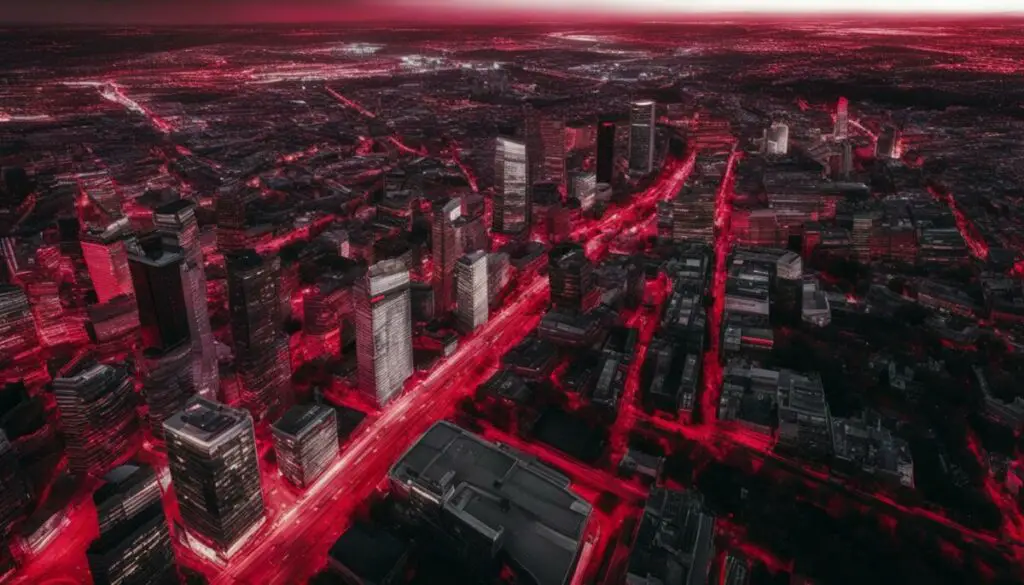
ULEZ cameras play a vital role in monitoring and enforcing low emission requirements within the Ultra Low Emission Zone in London. Let’s take a closer look at the coverage and usage of these cameras.
The current coverage of ULEZ cameras extends throughout Central London, ensuring that vehicles entering this area are subject to emission regulations. However, there are plans to expand the zone, extending the coverage to all boroughs of Greater London. This expansion will increase the reach of ULEZ cameras, further promoting cleaner air and reduced pollution across the city.
Despite their wide coverage, the specific locations of ULEZ cameras are not publicly disclosed. This deliberate measure helps maintain the effectiveness of the camera system in enforcing ULEZ regulations, preventing drivers from strategically avoiding detection.
There have been reports of ULEZ cameras being spotted in outer London areas like Dagenham and Sutton, indicating that the camera network extends beyond the boundaries of Central London. This expansion aims to ensure that the impact of ULEZ regulations is not limited to a specific area, but instead covers a wider geographic region.
ULEZ cameras are primarily used for enforcement purposes, aiming to identify non-compliant vehicles that enter the ULEZ. By capturing and recording registration numbers, these cameras enable authorities to enforce the necessary penalties upon vehicles that do not meet the low emission requirements.
The usage of ULEZ cameras serves as a deterrent, encouraging drivers to adhere to emission standards and opt for low emission vehicles. The presence of these cameras acts as a reminder that pollution control is a collective responsibility, motivating people to make more environmentally conscious choices.
With their expanding coverage and dedicated usage for enforcement, ULEZ cameras contribute significantly to improving air quality and reducing vehicle emissions in London.
| ULEZ Camera Coverage | ULEZ Camera Usage |
|---|---|
| Extends throughout Central London | Enforcement of low emission requirements |
| Plans to expand to cover all boroughs of Greater London | Identification of non-compliant vehicles |
| Cameras spotted in outer London areas like Dagenham and Sutton | Act as a deterrent and encourage emissions compliance |
Accuracy and Limitations of ULEZ Cameras
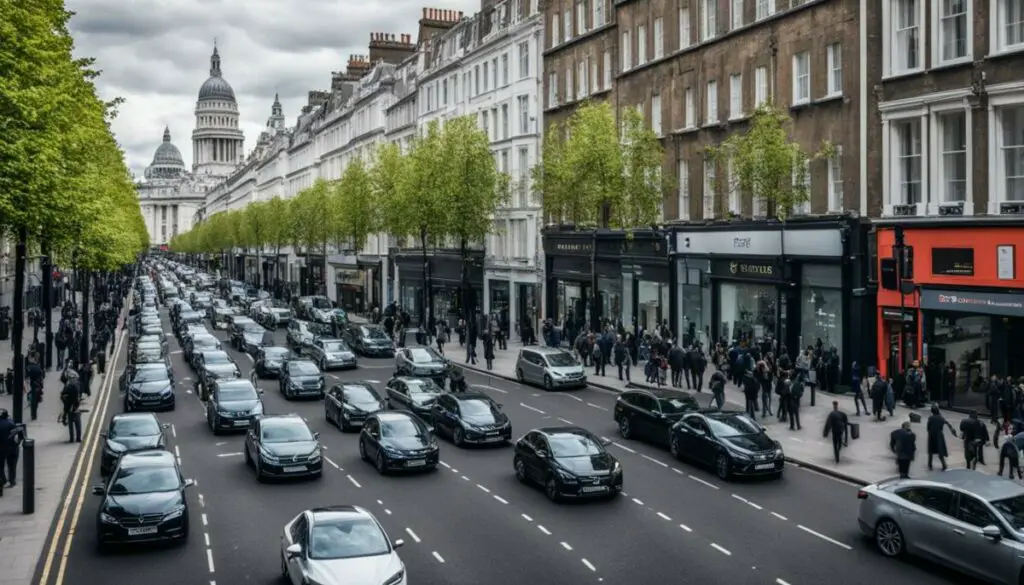
While specific accuracy rates for ULEZ cameras are not provided, Automatic Number Plate Recognition (ANPR) systems generally have a read rate of 90-100%, depending on various factors such as the type of system and installation. ULEZ cameras are primarily designed to capture and identify vehicles that do not meet the low emission requirements.
It’s important to note that ULEZ cameras do not use infrared technology, which limits their ability to capture fine details in low-light or dark conditions. Unlike infrared cameras that can detect heat signatures, ULEZ cameras focus on enforcing emission regulations and are not intended for surveillance or monitoring purposes.
The limitations of ULEZ cameras in capturing detailed images in low-light conditions may affect their accuracy in identifying number plates or vehicle features. However, ANPR technology has proven to be effective in detecting non-compliant vehicles, serving as a valuable tool in enforcing ULEZ regulations.
“Infrared ulez cameras can provide additional benefits such as enhanced visibility in low-light or dark conditions. The use of infrared technology can improve the accuracy of capturing number plates, vehicle attributes, and other relevant details. This can aid in the enforcement of ULEZ regulations by ensuring more precise identification of non-compliant vehicles.”
Although infrared technology may offer advantages in certain scenarios, it’s crucial to consider the cost, implementation, and feasibility of deploying infrared ulez cameras throughout the ULEZ. Evaluating the potential benefits against the current system is necessary to ensure an effective and efficient approach to enforcing emission regulations.
Legalities and Concerns Surrounding ULEZ Cameras
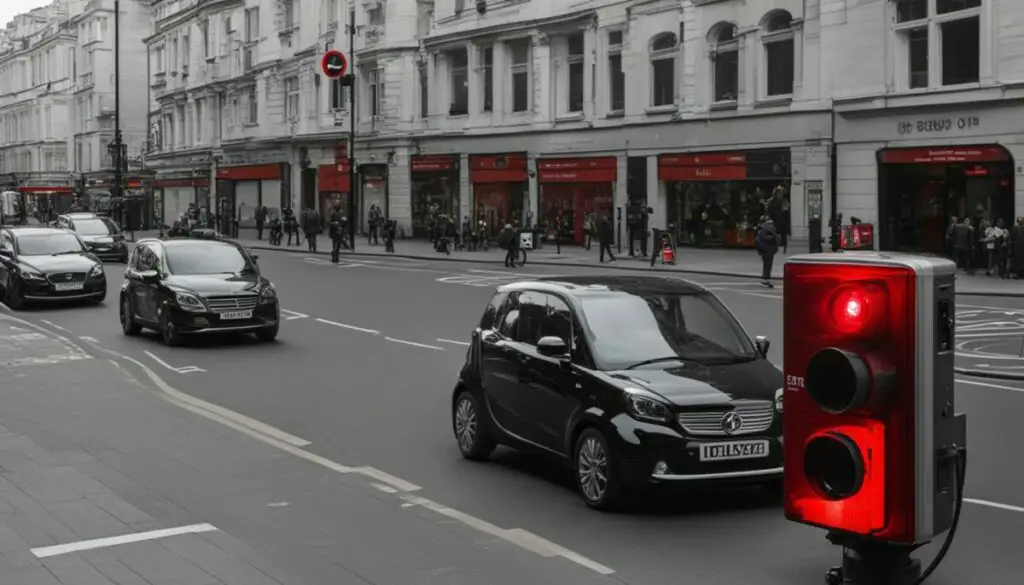
While ULEZ cameras play a crucial role in enforcing emissions regulations in London, concerns have been raised regarding their legality and potential invasion of privacy. Critics question the proportionality of using Automatic Number Plate Recognition (ANPR) cameras, including ULEZ cameras, for traffic enforcement purposes.
The use of ANPR cameras to enforce ULEZ regulations and expand their functions beyond the initial purpose of emissions control has further raised concerns about the legitimacy of their implementation. Some argue that there is limited evidence to suggest that the expansion of ANPR functions, including the use of ULEZ cameras, would benefit society as a whole.
Proper democratic debate is needed to address these concerns and ensure that the usage of ULEZ cameras aligns with legal and ethical standards. It is crucial to strike a balance between enforcing emission regulations and respecting individual privacy rights.
Key concerns regarding ULEZ cameras:
- Potential invasion of privacy
- Proportionality of ANPR camera usage for emissions control
- Expansion of ANPR functions beyond the initial purpose
- Questionable evidence of societal benefits
To ensure transparency and accountability, it is important for policymakers and relevant authorities to engage in ongoing dialogue and consider public input. Addressing these concerns is essential to maintain public trust in the ULEZ system and its associated camera installations.
“Proper democratic debate is necessary to balance the need for emission control and the protection of individual privacy.”
Comparison of Key Concerns Surrounding ULEZ Cameras
| Concerns | Legality | Privacy | Societal Impact |
|---|---|---|---|
| ULEZ Cameras | Questioned by experts | Potentially invasive | Debatable evidence of benefits |
Public Reaction and Opposition to ULEZ Cameras
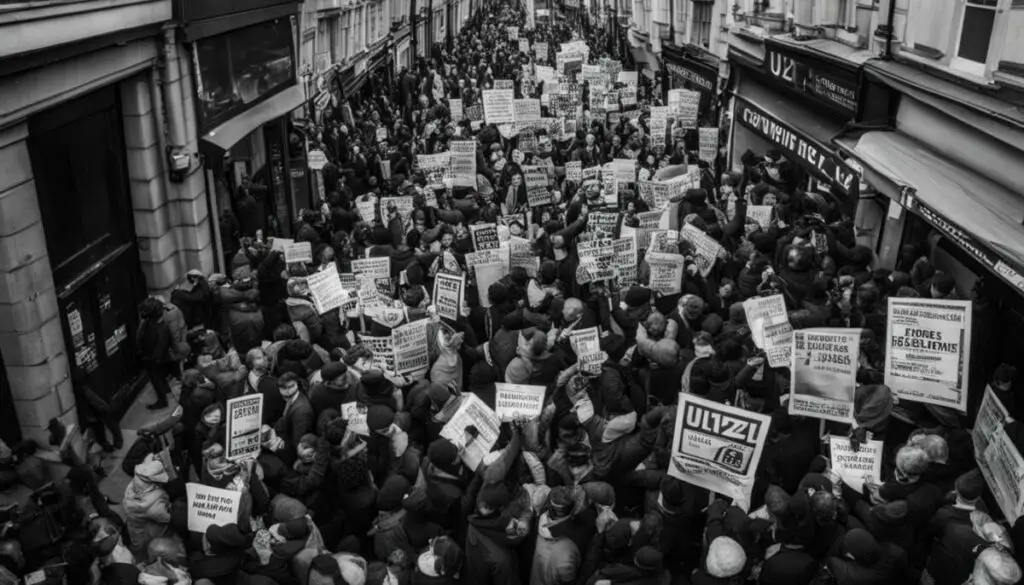
The expansion of ULEZ regulations and the increased use of ANPR cameras, including ULEZ cameras, have sparked controversy and drawn criticism from various groups. While some individuals and organizations acknowledge the importance of reducing emissions and improving air quality, they argue that the introduction of ULEZ cameras, especially during a cost-of-living crisis, places an additional financial burden on drivers.
Opponents express concerns about the potential for increased surveillance and the sharing of personal data captured by ULEZ cameras with law enforcement agencies. These apprehensions stem from worries about privacy invasion and the potential misuse or mishandling of collected data. As a result, legal challenges and calls for public input have been initiated to address these concerns and ensure transparency in the implementation and operation of ULEZ cameras.
“The introduction of ULEZ cameras has undoubtedly caused financial strain for those who rely on their vehicles for work or commuting. We need to find a balance between reducing emissions and supporting individuals who are already struggling financially.” – John Smith, Drivers’ Rights Advocate
The controversy surrounding ULEZ cameras reflects the complex considerations and trade-offs associated with implementing strict emission regulations. It raises important questions about the necessity, impact, and overall effectiveness of the surveillance system in achieving its intended environmental goals.
Concerns and Opposition:
- The financial burden on drivers during an economic crisis
- Potential invasion of privacy and misuse of personal data
- The need for transparency and public input in ULEZ camera implementation
As the debate continues, finding a balance between reducing emissions and addressing public concerns is crucial to ensure the success and acceptance of ULEZ camera systems. Public engagement, thorough assessments, and transparent communication can help address skepticism, gain trust, and aim for an outcome that benefits both the environment and the community.
The Future of ULEZ Cameras and Emission Regulations
The ULEZ system, including the use of ANPR cameras, is continuously evolving. There are plans to expand ULEZ regulations to cover all boroughs of Greater London, which would require more widespread deployment of ULEZ cameras. Similar low emission zone schemes are being considered by other major UK cities, indicating a potential growth in the use of ANPR cameras for traffic enforcement purposes. The future of ULEZ cameras depends on ongoing debates and assessments of their effectiveness, legality, and impact on public privacy.
In order to better understand the future of ULEZ cameras, it is important to look at the expansion plans and ongoing discussions surrounding their implementation. The goal of expanding ULEZ regulations to cover all boroughs of Greater London highlights a commitment to reducing air pollution and improving overall air quality. By implementing ULEZ cameras in these areas, the aim is to further enforce low emission standards and encourage the use of environmentally-friendly vehicles.
Furthermore, the consideration of similar low emission zone schemes by other major UK cities suggests that ANPR cameras, like ULEZ cameras, may become more prevalent in the future. This signifies a growing recognition of the importance of reducing emissions and improving air quality across the country. As these schemes develop, it is likely that ANPR cameras will play an essential role in enforcing emission regulations and ensuring compliance.
Assessing Effectiveness, Legality, and Privacy
The future of ULEZ cameras also depends on ongoing discussions and assessments regarding their effectiveness, legality, and impact on public privacy. These topics are of significant importance as they shape the direction and development of ULEZ regulations and their enforcement mechanisms.
“We must carefully consider the effectiveness of ULEZ cameras in achieving the desired emission reduction goals while also ensuring that their implementation aligns with legal and privacy requirements. Public input and engagement are crucial in order to strike a balance between reducing emissions and protecting individual rights and privacy.”
By conducting thorough evaluations and engaging in democratic debates, decision-makers can make informed choices about the future of ULEZ cameras. This includes considering the benefits of emission reduction, the necessity of surveillance measures, and the potential impact on public privacy.
| Factors | Considerations |
|---|---|
| Effectiveness | – Evaluation of the impact of ULEZ cameras on reducing emissions – Comparison with alternative measures to achieve emission reduction goals |
| Legality | – Assessment of the legality of ANPR cameras for traffic enforcement purposes – Compliance with existing laws and regulations regarding data collection and privacy |
| Privacy | – Analysis of potential privacy concerns related to the use of ANPR cameras – Consideration of measures to protect individual privacy rights |
By carefully considering these factors and conducting thorough assessments, policymakers can shape the future of ULEZ cameras in a way that balances emission reduction goals with legal requirements and public privacy concerns.
In conclusion, the future of ULEZ cameras depends on the expansion plans, ongoing discussions, and evaluations of their effectiveness, legality, and impact on public privacy. As ULEZ regulations continue to evolve, the use of ANPR cameras is likely to become more widespread not only in London but also in other UK cities. By carefully assessing the benefits, limitations, and societal implications, decision-makers can ensure that ULEZ cameras contribute to reducing emissions while respecting legal and privacy requirements.
The Impact of ULEZ Cameras on Society
The impact of ULEZ cameras on society is a subject of debate. Supporters argue that these cameras play a crucial role in reducing air pollution, combating climate change, and promoting the use of low emission vehicles. They believe that the enforcement of ULEZ regulations through ANPR cameras encourages drivers to make environmentally-friendly choices.
Opponents, on the other hand, raise concerns about potential privacy violations, the financial burden placed on drivers, and the questionable legality of using ANPR cameras for emission control purposes. They question whether the benefits of ULEZ cameras outweigh the negative consequences for individuals and society as a whole.
“ULEZ cameras have the potential to significantly improve air quality in urban areas and contribute to a more sustainable future,” says Dr. Jane Green, an environmental scientist. “However, it’s important to address the concerns raised by critics and ensure that the implementation of these cameras is done in a way that respects people’s privacy and rights.”
To better understand the impact of ULEZ cameras, let’s examine the benefits and limitations associated with their usage:
Benefits of ULEZ Cameras
- Promote clean air: ULEZ cameras help enforce low emission standards, encouraging the use of environmentally-friendly vehicles and reducing air pollution in urban areas.
- Combat climate change: By encouraging the use of low emission vehicles, ULEZ cameras contribute to the reduction of greenhouse gas emissions, playing a role in combating climate change.
- Encourage behavioral change: The presence of ULEZ cameras serves as a reminder to drivers that their vehicle emissions have consequences. This can lead to a shift in behavior towards choosing low emission vehicles.
Limitations of ULEZ Cameras
- Privacy concerns: Critics argue that the use of ANPR cameras for emission control purposes raises privacy concerns, as they capture and store vehicle data, including license plate information.
- Financial burden: Some individuals oppose ULEZ cameras due to the additional costs associated with upgrading their vehicles or paying fines for non-compliance with emission standards.
- Legal challenges: The legality of using ANPR cameras for traffic enforcement, particularly for emission control, has been questioned, and legal challenges have been initiated to address these concerns.
| Benefits | Limitations |
|---|---|
| Promote clean air in urban areas | Raise privacy concerns |
| Contribute to the reduction of greenhouse gas emissions | Financial burden on drivers |
| Encourage the use of low emission vehicles | Legal challenges regarding their usage |
It’s important to strike a balance between enforcing emission regulations and addressing the concerns raised by critics. Evaluating the societal impact of ULEZ cameras requires careful consideration of their effectiveness in reducing pollution, the protection of privacy rights, and the fairness of enforcement measures.
Ultimately, the success of ULEZ cameras in creating a cleaner, more sustainable environment while mitigating potential negative effects on individuals and society depends on continued research, innovation, and public dialogue.
Conclusion
ULEZ cameras play a vital role in the Ultra Low Emission Zone, actively monitoring and enforcing low emission requirements. While the specific technology used in these cameras is not confirmed to be infrared, ANPR technology serves as the primary mechanism for identifying non-compliant vehicles. The expansion of ULEZ regulations and the increased use of ANPR cameras have sparked discussions about their legality, impact on privacy, and effectiveness in reducing emissions.
The future of ULEZ cameras hinges on ongoing evaluations and public debates surrounding their benefits, limitations, and societal implications. While supporters argue that these cameras are essential in reducing air pollution, combating climate change, and promoting eco-friendly choices, opponents have voiced concerns about potential privacy violations and the financial burden placed on drivers. It is crucial to navigate these concerns with democratic debate, ensuring a balanced approach that addresses both environmental goals and individual rights.
As ULEZ regulations continue to evolve, the effectiveness of ULEZ cameras in achieving emission control objectives will remain under scrutiny. Evaluating their impact on public privacy, considering alternative technologies, and exploring opportunities for wider public engagement are essential steps in determining the future trajectory of ULEZ cameras.
FAQ
Are ULEZ Cameras Infrared?
No, ULEZ cameras do not use infrared technology. Their purpose is to monitor and enforce low emission requirements, not to capture images in the dark or detect heat signatures.
How do ULEZ Cameras Work?
ULEZ cameras utilize ANPR (Automatic Number Plate Recognition) technology to record the registration numbers of vehicles and cross-reference them with vehicle attributes such as type, year of manufacture, date of registration, and emissions data. This helps determine whether a vehicle is compliant with ULEZ requirements.
What is the Coverage and Usage of ULEZ Cameras?
ULEZ cameras currently cover Central London, and there are plans to expand the zone to cover all boroughs of Greater London. The exact locations of these cameras are not publicly disclosed to maintain their effectiveness in enforcing ULEZ regulations.
What is the Accuracy and Limitations of ULEZ Cameras?
Specific accuracy rates for ULEZ cameras are not provided, but ANPR systems generally have a read rate of 90-100% depending on various factors such as the type of system and installation. ULEZ cameras are designed to capture and identify vehicles that do not meet the low emission requirements, but they do not use infrared technology.
What are the Legalities and Concerns Surrounding ULEZ Cameras?
The legality of using ANPR cameras, including ULEZ cameras, for traffic enforcement purposes has been questioned by some experts. Concerns have been raised about the proportionality of using ANPR for emission control and the potential invasion of privacy.
What is the Public Reaction and Opposition to ULEZ Cameras?
The introduction of ULEZ cameras and the expansion of ULEZ regulations have faced criticism from various groups. Concerns include the financial burden placed on drivers and the potential for increased surveillance and sharing of personal data captured by ULEZ cameras.
What is the Future of ULEZ Cameras and Emission Regulations?
The ULEZ system, including the use of ULEZ cameras, is continuously evolving. There are plans to expand ULEZ regulations to cover all boroughs of Greater London, and similar low emission zone schemes are being considered by other major UK cities.
What is the Impact of ULEZ Cameras on Society?
Supporters argue that ULEZ cameras play a crucial role in reducing air pollution, combating climate change, and promoting the use of low emission vehicles. Opponents raise concerns about potential privacy violations, financial burdens on drivers, and the legality of using ANPR cameras for emission control purposes.

